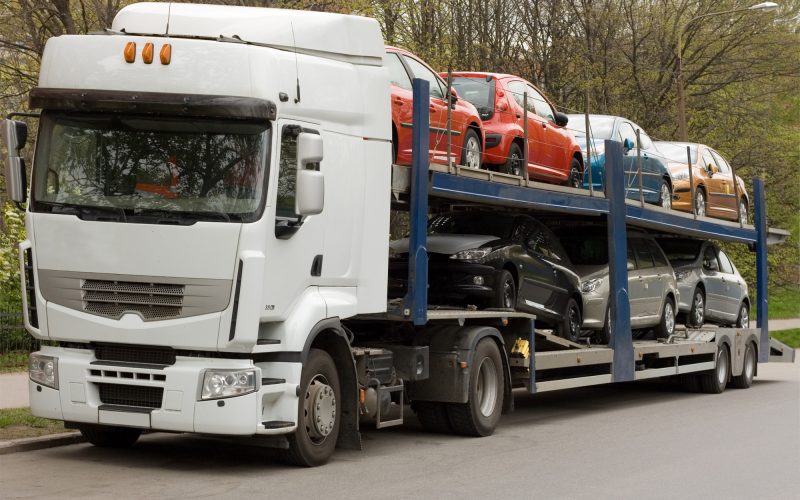Open-Air vs. Enclosed Trucks: What’s the Best Way to Ship a Car Direct?
The transportation industry is huge in the United States, and a large portion of that is dedicated to vehicle shipping. In fact, it’s so large that it generates $11 billion in revenue each year.
Many people decide to ship a car direct to its future destination instead of driving it. Shipping is cheaper, less stressful, and less time-consuming.
Once you decide that you want to ship your car, you’ll need to figure out how you want to ship it. Do you go with an open-air trailer or an enclosed one?
We’ve got the guide to help you decide which method is best for your needs.
How to Choose
Choosing the right transport method depends on a number of factors that you should consider. How much security does your vehicle need?
Cars that are worth a lot of money or are brand new may need higher security. Older cars that are a bit dinged up may not need that much security.
Whichever method you choose, try to get a couple of quotes. This will ensure that you get a fair price for your shipment.
For each company that you get a quote from, make sure that they’re licensed and bonded. This way, you’ll get paid for damages in case anything goes wrong.
Open Air Auto Transport
This is the most common and cost to ship a car. These are the trucks most people think of when talking about car transport.
There are two levels for the cars to get loaded on. The whole trailer is about 75 to 80 feet long. These vehicles have no sides or roof, leaving the cars exposed to the elements.
Pros
The advantage of this shipping method is that it costs a lot less than the enclosed option. Plus, the driver can easily check the cars for any possible damage.
Operation of the truck is less expensive and uses less fuel because the whole rig weighs less. This makes it better for the environment.
Cons
The downside is that the vehicles are exposed to the elements and pretty much everyone and everything at all times. This means that there’s a greater risk of damage.
Many times, the cars will have a protective white plastic wrap on them. This helps prevent minor scratches and keeps the vehicle clean while in transit.
Enclosed Auto Transport
You’ve probably seen and driven next to enclosed auto transport trailers without realizing it. This is because they typically look like all of the other semi truck trailers out there.
This type of transport is the top choice for those who need to ship expensive cars. Usually, these are antiques, luxury, or high-performance sports cars.
Pros
The advantage to these enclosed trailers is the high level of security. The trailer has sides, a roof, and backdoors that can get locked.
Any road debris bounces off the trailer instead of the vehicles getting transported. The weather elements are also stopped from getting to the cars.
Cons
Because the trailer is fully enclosed, the driver won’t be able to make regular inspections. If the vehicle arrives damaged, you won’t know when it happened.
Expect to pay a lot more for this method of transportation. Semi trucks, in general, are not designed to be aerodynamic, and with the trailer being enclosed, it only adds to the drag.
The more drag there is, the more fuel it takes to get from point A to point B. Since it’s more expensive to operate, you’ll pay more to transport your car.
Prep Your Car
No matter which method you choose, you need to properly prep your car for shipment. This will help minimize any potential damage — and let you see if anything happens to your vehicle.
Wash
The first thing you should do is to clean your car. This will give you a chance to get a close up good look at its condition. You can see where every nick and scratch is located.
Turn Off the Alarm
Turn off any security or alarms you have on your car. The last thing you want is for the alarm to start going off mid-transit. If the alarm does go off during transportation, the driver will continue with the shipment.
However, you will most likely make the trip unpleasant for the driver. You will also have a dead battery by the time your car gets to the destination.
Empty the Tank
Leave your gas tank at less than half full. You’re not driving the car, you’re shipping it, so it’s no need to have a full tank of gas. Most shipping companies prefer that you leave your tank close to empty.
Remove Personal Belongings
You cannot pack your car up solid with stuff and expect the shipper to take it. Empty the car of any personal belongings before they pick it up.
Ship a Car Direct
You have a couple options when it comes to shipping your car. You need to pick the method that will work for your needs and your wallet.
If your vehicle is especially valuable, you’ll want to ship a car direct from point A to point B in an enclosed trailer. This will provide the highest level of security and safety.
In case your car is older and not particularly expensive, then an open-air trailer will work just fine. You’ll also save money by using this method.
Instead of shipping your car, sell yours and check out our blog for tips on buying a new one!


